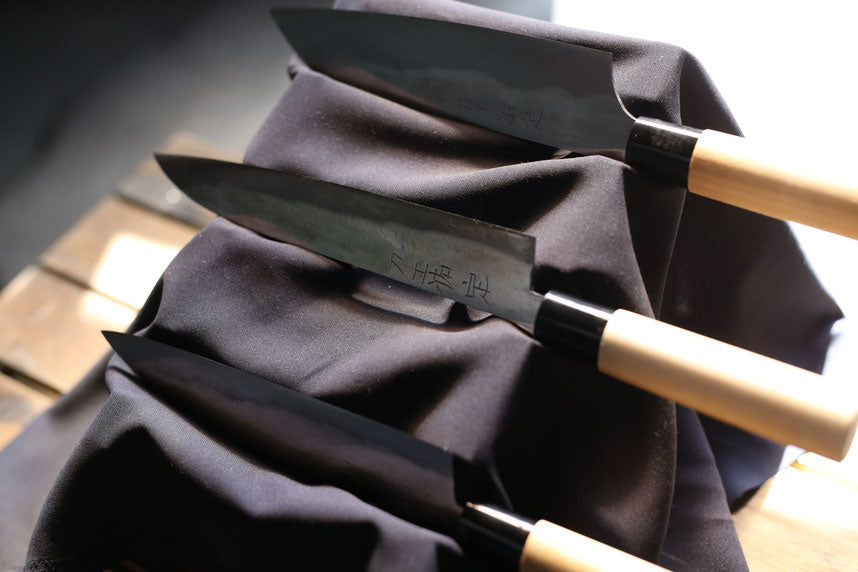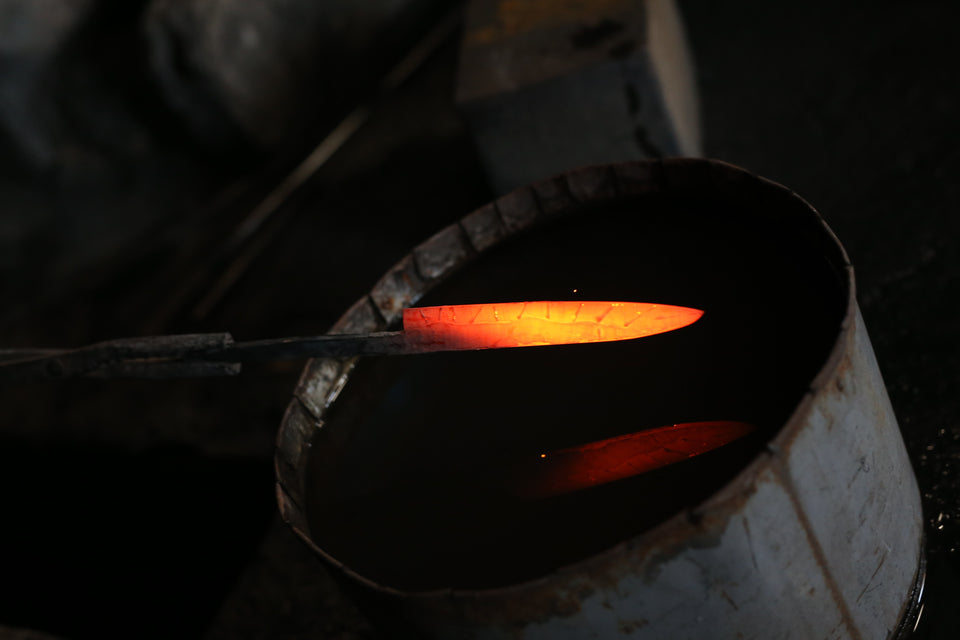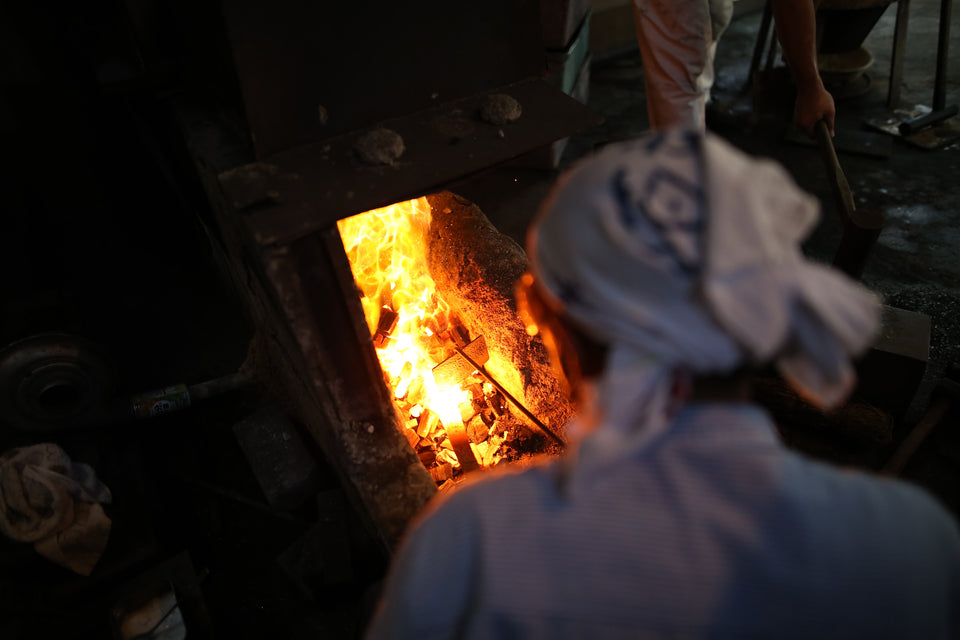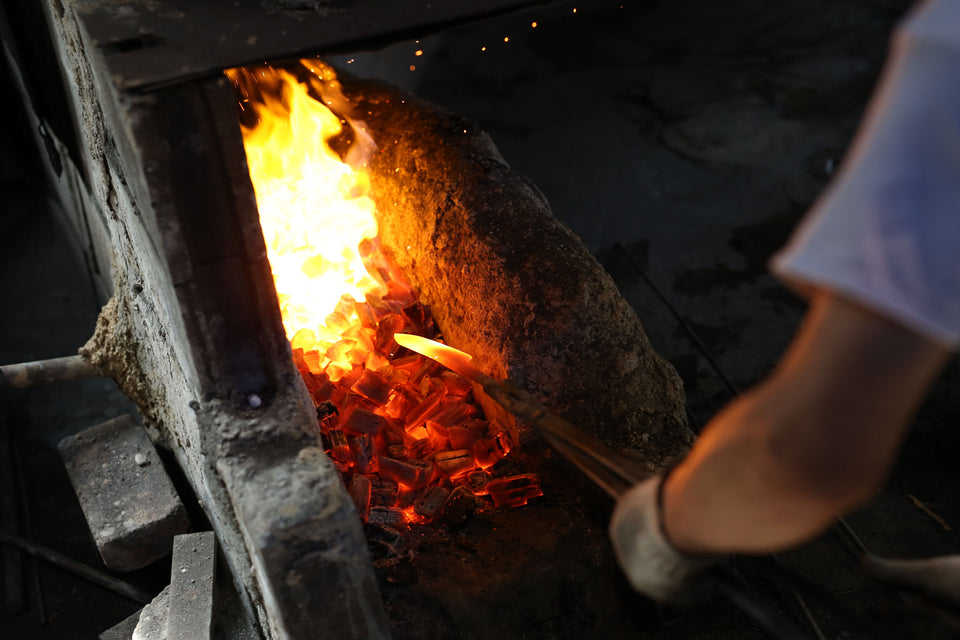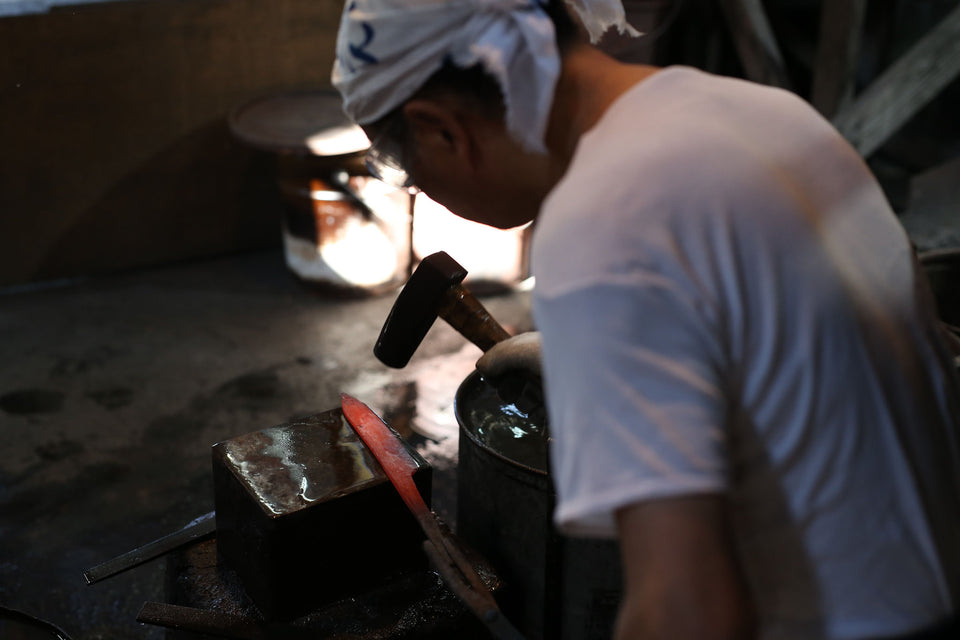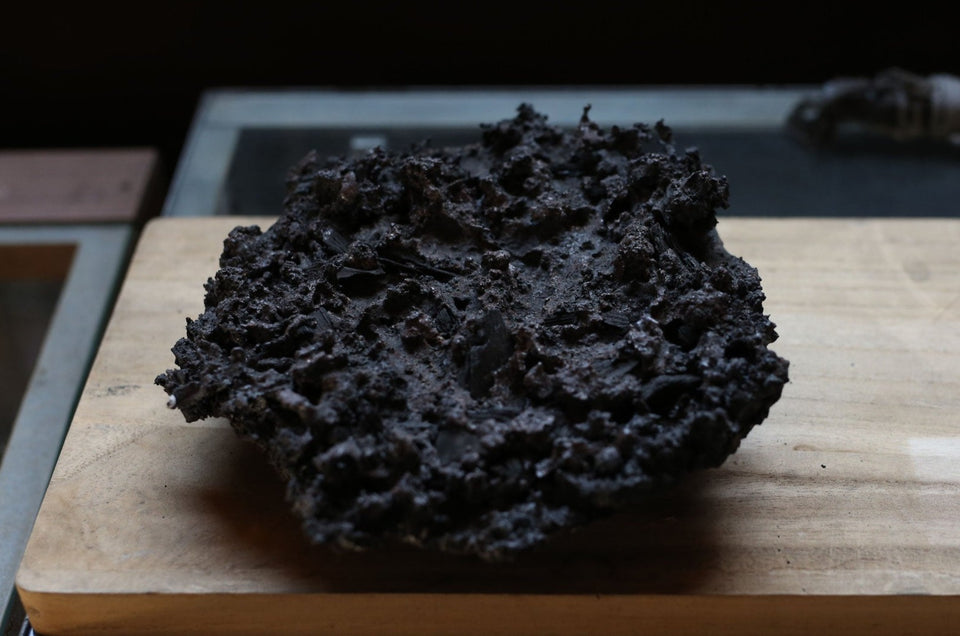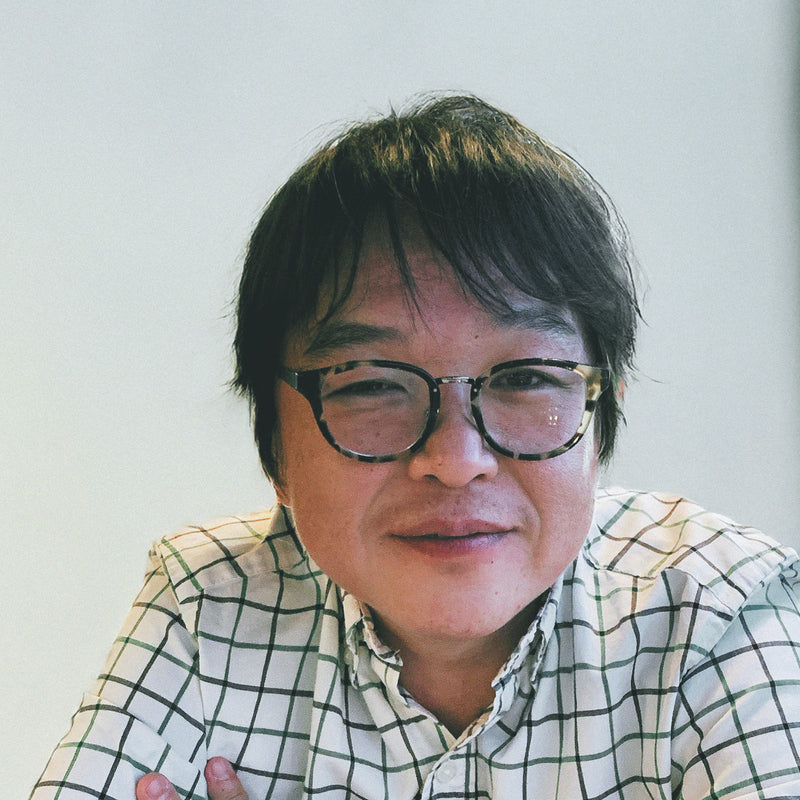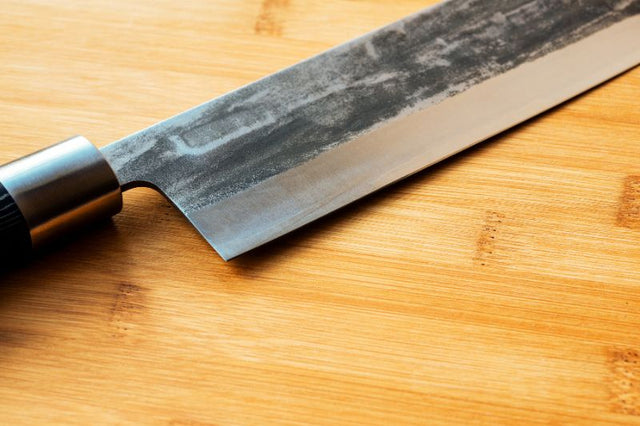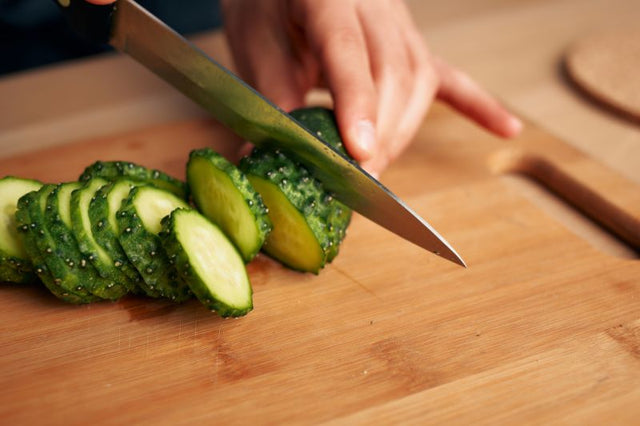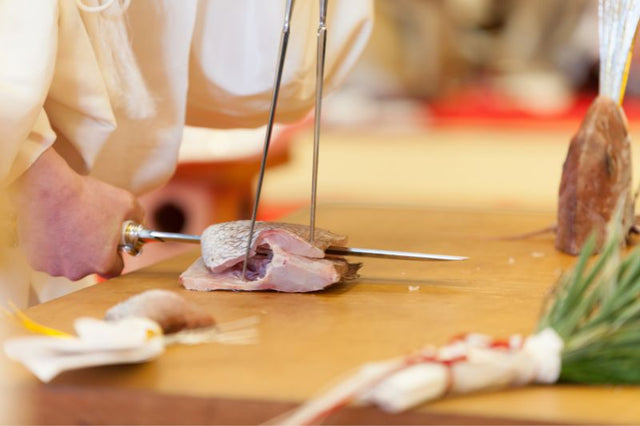Bunka Knife
Without a doubt, the Bunka has one of the most striking shapes of any all-purpose kitchen knife. You may have seen these knives before with an aggressively angular tip. However, not every knife called a Bunka is like this - and, in fact, many are rounded downward at the end, almost like a Santoku knife. So, if that's the case, what is a Bunka?
A True Generalist - The Structure of This Article
Well, there are a lot of misconceptions about the Bunka. Its history is murky, and you may hear different accounts about its origins. In this article, I will dig into some of the Bunka's past to clarify things. Then I'll take you through the features of this intriguing knife.


History of the Bunka
It Begins With the Creation of the Gyuto
During the Meiji period (1868 - 1912 CE), the Western Chef's knife inspired the creation of the Gyuto (meaning 'cow knife'), arguably Japan's first ever multi-purpose kitchen knife. Except, the Japanese were used to using single-purpose knives for each task. So there's a good chance that the Gyuto really was used only for beef for some time.
Here’s Where Things Get a Little Tricky
Depending on who you ask, the Bunka or Bunkabocho made its first appearance either around the same time as the Gyuto or decades later but still before the creation of the Santoku in the 1940s. Its name means 'cultural knife,' but a more meaningful translation is 'modern knife' because this design may have been the first to be considered (or at least actively marketed) as a Japanese-made all-purpose knife.
The Bunka Was Intended to be a Combination of Two Knives
Regardless of when the Bunka came to be, what is clear is that it was created by combining the shapes of the Gyuto with the Nakiri. In other words, some clever bladesmith could see the usefulness of having a pointed tip like the Gyuto and retaining a flat edge that the Japanese were already used to in the Nakiri.
Then, In the 1940s, the Santoku Appeared
The Santoku is a Bunka with a more rounded tip. But, in Japan, the two types of knives are not always distinguished from one another. Therefore, the names Bunka and Santoku are interchangeably used to refer to either type of knife. However, the two knives are different, if only by a little bit, but it changes a lot.

Features
Acutely Pointed Tip
This is the one significant difference from the Santoku, and it is worth noting. The exceptionally angular tip is what makes the Bunka truly an all-purpose knife. It makes slicing meat and doing fine precision tip-cutting significantly easier.
Wide Blade for Scooping
Just like the Santoku and Nakiri, the Bunka features a wide blade that makes scooping and scraping chopped food smooth and easy. So you won't be dropping little pieces of onion around your kitchen when you have one of these around.
Flat Edge for Push-Cutting
The Bunka has a flat edge that's great for push-cutting. Although, it has more of a curve to it, unlike the Santoku or Nakiri, making it reasonably good at rock-chopping. However, note that if you find a Bunka with an almost bow-shaped curve to its blade, this is likely a Hakata knife - a similar-looking regional variation of the Bunka.
How to a Use a Bunka
The Fine Tip is the Bunka’s Greatest Advantage
Use it for butchery, such as trimming off fat or cutting around bones. You'll find that the added precision makes the job a breeze. And, when it comes to vegetables, tap-chopping with just the knife's end is easy. In addition, because of the slender point of the blade, you can get accurate cuts without any extra resistance.
Use Push-Cuts for Quick Preparation
Using push-cuts, you'll dice and slice up vegetables in no time. It's also an incredibly accurate way to get uniformly cut pieces of food. Use the flat belly and heel of the knife for this style of chopping, avoiding the curve at the end of the blade to make sure that you cut through the entire vegetable. Once you get used to it, it's easy to do and takes a lot of strain out of your wrist.

The Slight Curve Will Help With Rough-Chopping
It may not have as much of a curve as the Gyuto, but the Bunka can still mince garlic and onions very well. Hold the tip down and move the heel up and down rapidly onto whatever you'd
like to chop. Just be careful; because of the Bunka's shape, it can be easy for your hands to slip down the end of the blade. So always stay alert when using it in this way to avoid injuring yourself.
And You Can Still Rock-Chop
The Bunka still rock-chops reasonably well. So, you don't need to worry if you're not a fan of push-cutting (or if push-cutting is too noisy for your household). These different cutting actions make the Bunka one of the most versatile knives available.
Should I Buy a Bunka?
Great All-Rounder for Starting Out
The Bunka covers all chopping, slicing, and dicing categories with good marks. It's a great knife to begin your journey into Japanese knives. It's suitable for beginners, although perhaps less friendly than a Santoku, and many professional chefs like to use a Bunka too. And even as your knife skills grow and you collect knives throughout your life, there's a good chance you'll keep reaching for your handy Bunka.
Sitting Between the Gyuto and Santoku
The Bunka is ever-so-slightly better than the Santoku at cutting, cleaning, and butchering meat. It's also better than the Gyuto at rapidly push-cutting vegetables.
So, If you're more of a meat eater, maybe consider a Gyuto instead. Alternatively, the Santoku might be for you if you enjoy push-cutting vegetables. However, if you're right down the middle and want a knife between both, the Bunka is exactly what you're looking for.
Click here to learn more about this Bunka KnifeGet Free Bonus Books
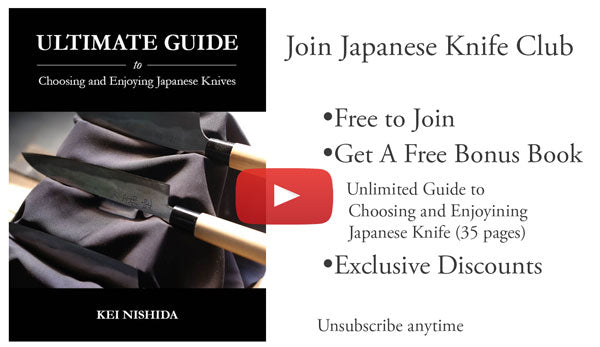
Sign up for free to the Japanese Knife Club to get advice and exclusive articles about how to choose Japanese Knives, and tips and tricks for using Japanese knives.
About the author
Kei Nishida
Author, CEO Dream of Japan
Certification: PMP, BS in Computer Science
Education: Western Washington University
Kei Nishida is a passionate advocate of Japanese craftsmanship, a writer, and the founder and CEO of Japanese Knife Co., Japanese Green Tea Co., and Japanese Coffee Co., all part of Dream of Japan.
His journey began with a mission to introduce the world to the exquisite flavors of Japanese green tea. Through Japanese Green Tea Co., he pioneered the import of premium tea grown in nutrient-rich sugarcane soil, earning multiple Global Tea Champion awards. He then expanded into the world of coffee, launching Japanese Coffee Co., the first company to bring Sumiyaki charcoal-roasted coffee to a global audience.
With a deep appreciation for Japanese artistry and tradition, Kei turned his attention to one of Japan’s most revered crafts: bladesmithing. Through Japanese Knife Co., he made handcrafted katana-style knives, created by a renowned katana maker, available outside Japan for the first time. These exceptional knives embody centuries of samurai sword-making expertise, blending tradition with modern functionality for chefs and collectors alike.
Kei’s journey continues as he uncovers and shares Japan’s hidden treasures—one sip, one blade, and one legacy at a time.




